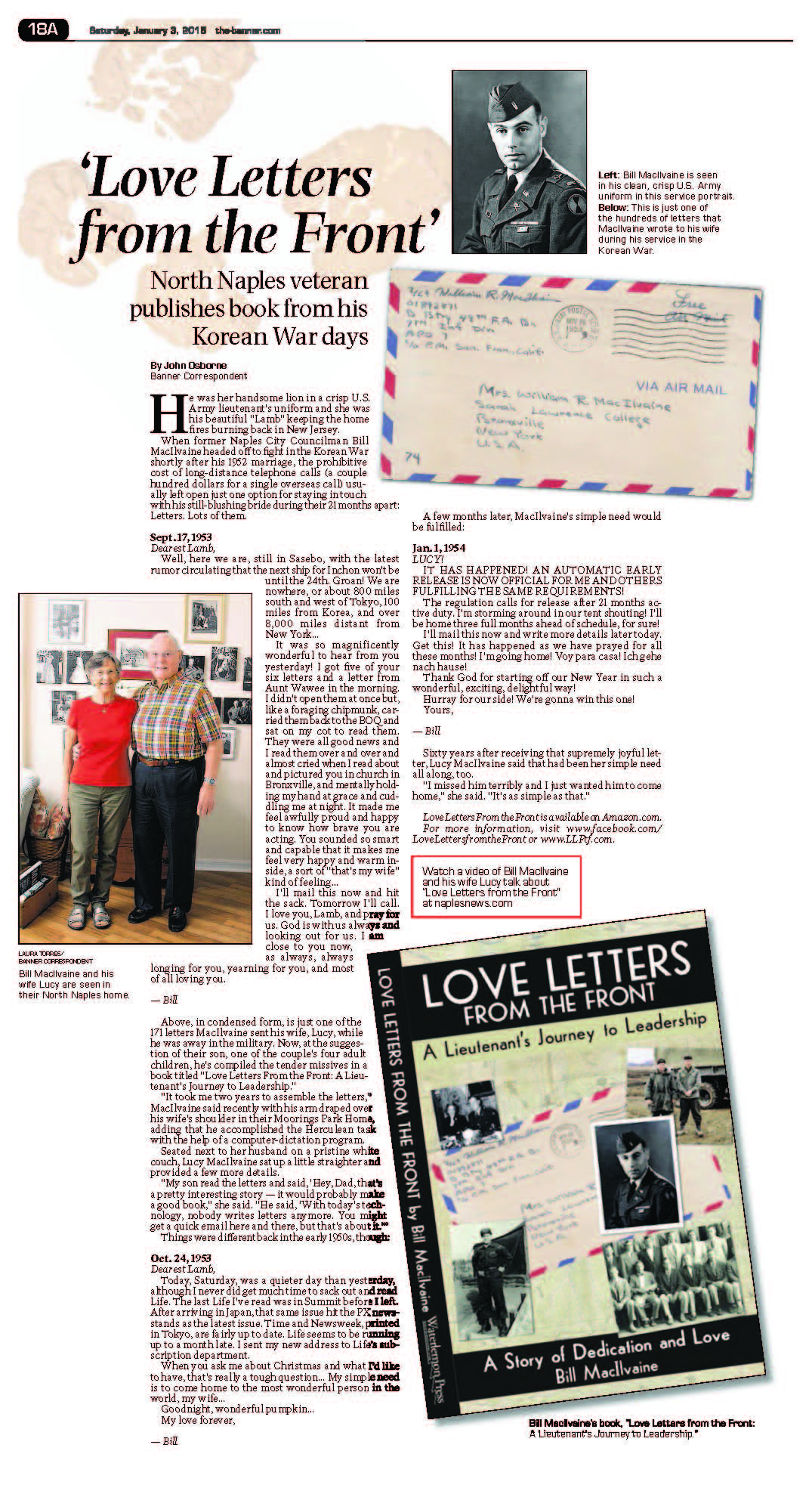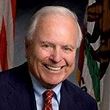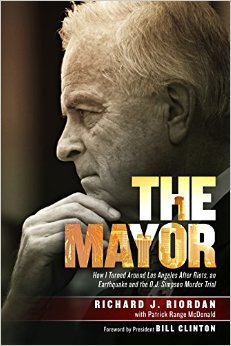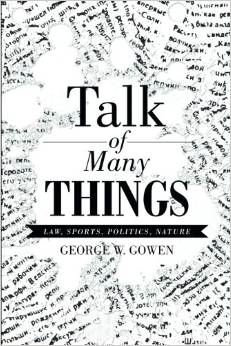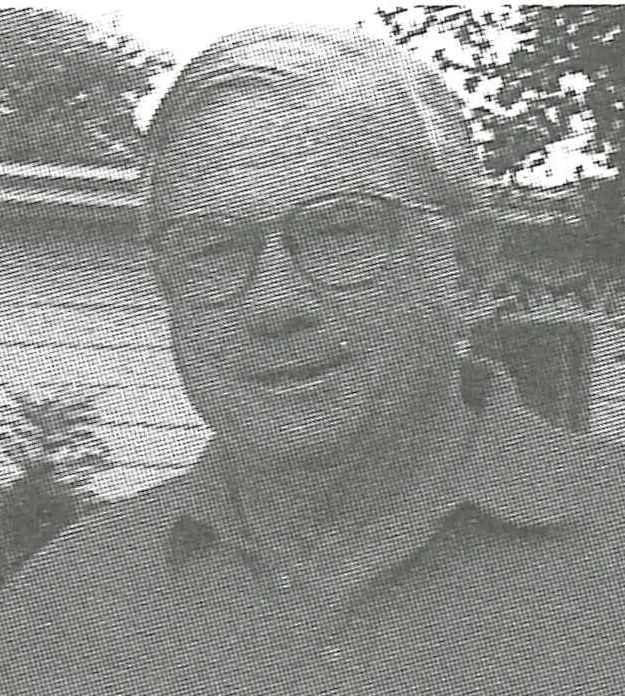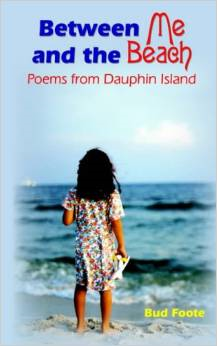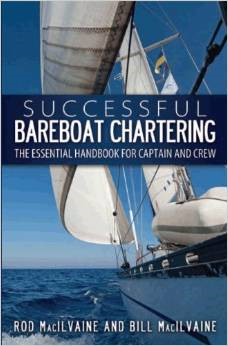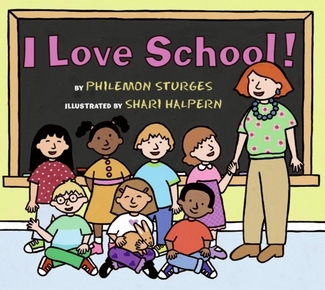 |
Class AuthorsFredric Alling - Brief Flights Gerald E. Bentley, Jr. - William Blake in the Desolate Market Gerald E. Bentley, Jr. - Boondoggles: Travels of a Restless Professor Hale Bradt - Wilbur's War James C. Davis - So Far, So Good Bud Foote - Between Me and the Beach Robert Foulke - tour guides
Benson Harer’s book, “What Killed King Tutankhamun: Autopsy #4, the Hippo Heresy”, is available on Amazon.com in both Kindle and paperback formats. The Amazon description states, “Previously unpublished Computerized Tomography scans are analyzed by two practicing Medical Doctors to conduct a fourth autopsy of King Tutankhamun's mummy. They prove that the king was killed when his heart and most of his chest wall was ripped out. The evidence is presented to show that this most likely occurred by a hippopotamus attack on the Nile.” And reviewers note, “The subject of Tutankhamen’s death is a complex subject. Dr. Harer manages to make a solid case for his theory as well as keeping it interesting”, and “A thought-provoking theory methodically laid out with factual evidence to support each step. Something anyone interested in the mumification process should read.”
He argues that various threads of evidence indicate that the boy king’s thorax was damaged by a hippo bite, while the Pharaoh was fowling in the marshes. Although vegetarian, hippos are fiercely territorial and are known to attack and capsize boats and maul the occupants. Even today, more people are killed in hippo attacks than by any other animal.” W. Benson Harer Jr., Was Tutankhamun killed by a hippo? Ancient Egypt, June/July 2012, pp. 51–54.
Gordon Freireich: John Schmidt went through 'The Mill' to write a book York [PA] Daily Record Published 9:22 a.m. ET Oct. 2, 2015 "Everyone has a book inside of them — but it doesn't do any good until you pry it out," author Jodi Picoult said. York businessman John C. Schmidt spent a dozen years wrangling his newly self-published memoir, "The Mill My Life in Paper," out of his recollections, dairies and files. Relying on the three-inch by four-inch pocket journals that both he and his father maintained throughout their working lives, John has reconstructed a year-by-year history of his business, social and family lives. John, who will turn 85 in November 2015, can trace his family roots deep in York County history. His motivation was to write his story of his career at the family-owned Schmidt and Ault Paper Company mill and later his mid-career transition to banking, eventually becoming president of York Bank (now M&T Bank). Taking that writing journey, he delves in detail about the paper mill and its various pieces of machinery. Relying on the palm-size journals he and his father used to write daily notes about their lives, he reconstructs a bygone era in manufacturing at the mill. Digging into the history of the operation, he notes the original mill was owned by the King family — for which Kings Mill Road is named — and was constructed and expanded on farmland. An unspoken irony is that since York College has purchased the former mill property, a good portion of the tract has been returned to its pristine condition. The original King "mansion" remains a visible reminder of the past. John went through almost 90 years of pocket journals, scrapbooks and the records in several filing cabinets in the basement of his home. "I am a saver of things," John notes. He has ledger sheets dating back to 1948 "that speak to a different era. I would flip through them," he says, "and when they triggered something in my mind, I'd make a note." Then John was faced with how to put his story down on paper. He began to write — in longhand — 10 years ago, "but I got serious about it four years ago." Over those four years, he would take his handwritten pages to NeFra Communications Center in York, where the pages would be typed. The final book is the fourth draft of those 480 pages in the book. In his business and civic lives, John was involved with numerous alphabet-initialed organizations that helped to shape today's York County — and particularly York City. John Schmidt is not the first member of his family to write a memoir. Sue Schmidt, John's wife of 59 years, is well-known in her own right for her civic work in York and adventures around the world. She penned "Journeys, Journals and Jawing" about a dozen years ago. Included is her participation in skiing to the North Pole, biking across China, walking the Sahara Desert, climbing Mount Everest, Dragon Boat racing in Taiwan, taking part in marathons, including the first one to take place in the Antarctic. The closing paragraph of John's book restates his motivation for writing it: "As with Sue's (book), 'The Mill' has been written for our children, grandchildren and future generations. The reader will learn a great deal about genealogy, our many activities, and some York, Pennsylvania history. Schmidt and Ault Paper Company, of course, is the centerpiece!" Neither John nor Sue had prior writing experience but felt strongly this was something they wanted to do for their family. They strongly encourage others to do the same and put their stories down on paper. That's a great gift for future generations. Copies of John Schmidt's "The Mill — My Life in Paper" have been presented to each library in York County. The book is also available at the York County Heritage Trust Book Shop, with proceeds from all sales going to The Trust. Gordon Freireich is a former editor of the York Sunday News.
I947: Game That Changed My Life I
Zip by my part of town, Chickahomini,
Pigs, goats, chickens wandering around
Flash by the farting factories
Ride, in deafening silence caused by Tomorrow you go nose-to-nose with
butt heads with black athletes
who anxiously await
Masi, yours ass especially as our
In sober silence we disembark under
II We stomp onto a field of dirt, pebbles
Ossining fans pack rickety bleachers
Raucous, drooling fans salivating
We gasp at Big Daddy, all-state fullback
First play, I lock eyeballs with Big Daddy
Big Daddy roars through our defense
I charge directly at him, certain
We collide like two locomotives
Big Daddy trips down to the ground
Later, at a critical moment in the game
bounces to the ground behind me
Taunts me as he waltzes into
As the game enters its final seconds
Refs gives Big Daddy the ball
Like a charging bull he stomps
My play on offense is my best ever
through a barrage of on-target passes
five times ending
I sit alone in the back of the bus
My awful defense, special teams play
III
Remember Ossining?
Well Ossining’s coach is friend of
Told Charley if he is looking for
who can really throw the ball
Princeton looked your way
Coach, who the hell is Princeton?
I grab volume P of our Encyclopedias
What I read clobbers my confidence
For my train ride to Princeton
Not the lowbrow Daily News
I dread the admissions interview
The admission officer looks like my dad
Next, twelve other football hopefuls and I
I ask Coach why no switch to T-Formation
My thought "Coach you are looking at him” IV
to run with a student body of graduates
Besides dad would go bankrupt
Then, holy shit, Princeton opens
Like an indentured servant I earn
dining hall busboy, events usher,
V
classes in morning, early afternoon
training table dinner ‘til seven
The price I pay to play three varsity sports
VI
Later realize Princeton enlivened
Spurred me to job successes in manufacturing
As a member of the class of 1952 I recall
Clubs you take all of us
As a Princeton alumni I take pride
Its educational excellence
Its annual alumni parade of colors
Every five years
Going back, Going back Game Ball: 1950 Princeton Tigers I It’s the last time this season VIII To Joe Masi with gratitude
Stone Hill in Baltimore: Stories from a Cotton Mill Village by Guy Hollyday
The story of the little neighborhood of Stone Hill starts with the emergence of Baltimore as a major port; the voracious need for canvas in the age of sail; the assemblage of capital to harness water power, build mills, install machinery; and to construct housing for the workers who operated that machinery. These forces also swept jobs away as synthetics created new challenges and spinning and weaving moved South. Guy Hollyday understands and tells the big story of Stone Hill from early in the 20th century Guy Hollyday is an old-timer in a neighborhood that continues to evolve. In the 21 years since the publication of the first edition of this book, Stone Hill has continued to change, to grow more affluent, and more a part of the city as the old mills along the Jones Falls Valley are converted to apartments, offices, artist studios, and restaurants...
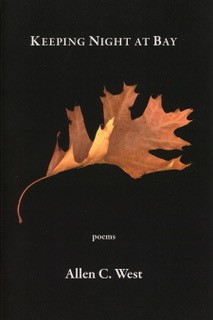 We have received Al West?s latest book of poetry, "Keeping Night at Bay?. These short poems are about childhood, loss, and old age, which all of us can relate to. This is his third book of poems. If you would like either it or his second, "Beirut Again,? of which he still has a few copies, let him know. Contact information is in our 2017 Class Directory, and in our website Directory [see Classmates menu above]. Al commented, "I worked on these poems for about five years, but poems are never finished. You just get tired of them or give up trying to make them better." Al West We have received Al West?s latest book of poetry, "Keeping Night at Bay?. These short poems are about childhood, loss, and old age, which all of us can relate to. This is his third book of poems. If you would like either it or his second, "Beirut Again,? of which he still has a few copies, let him know. Contact information is in our 2017 Class Directory, and in our website Directory [see Classmates menu above]. Al commented, "I worked on these poems for about five years, but poems are never finished. You just get tired of them or give up trying to make them better." Al WestPosted 6/12 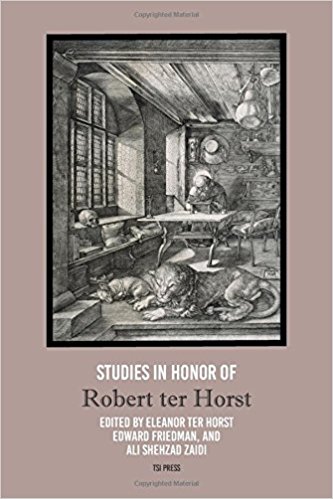 We have received the volume "Studies in Honor of Robert ter Horst ‘52 edited by among others, his daughter, Eleanor ter Horst published by TSI Press. The book states: "This collection of essays honors Robert ter Horst, a scholar of comparative literature. The contributions reflect the diversity of the honoree’s interests. While most of the essays focus on Spanish literature of the late 15 through 17 centuries other national traditions are represented, and essays exhibit a variety of scholarly approaches. The texts under scrutiny range from poetry, prose and drama of the early modern era though contemporary theater and film. Following personal tributes to Professor ter Horst from the three co-editors eleven essays by scholars in the fields of Spanish and comparative literature comprise this volume” Posted 5/11
George C. Newlin is a man of many talents. The term "polymath" comes to mind, and, indeed, the designation fits. A corporate lawyer, venture capitalist, amateur concert pianist and opera singer, he has succeeded in whatever he set out to do. It is his third and current career, however, which he says gives him the most pleasure. "Categorically, this is the most enjoyable of any of my careers," says Mr. Newlin. "Some people are forces of nature, and George is certainly a force of nature, given his boundless energy," says John Logan, Literature Bibliographer at Princeton University's Firestone Library. Describing George Newlin's life succinctly is a challenge. Now an energetic 75, he was born in Brooklyn, N.Y. and moved to Scarsdale in Westchester County, N.Y. when he was seven. George attended public schools in Scarsdale, especially enjoying English classes, and he was a great reader. "I loved the historical books on the Civil War and also Mark Twain, and Scaramouche" he recalls. He played tennis, and liked summer visits to New England. "We had family trips to Rockywold at Squam Lake in New Hampshire, and I went to camp at Lake Winnepesaukee, also in N.H.I enjoyed all of that." But it was music that consumed most of George's time and interest as he was growing up. "I started piano lessons at seven, and then studied at the Westchester Conservatory of Music," recalls Mr. Newlin. At Scarsdale High School, George excelled not only in music, but also in academics, and was involved in extra-curricular activities, such as serving as president of the French Club and other organizations. He was especially known in school both for his piano performances and his smooth baritone singing voice in school musicals, including Gilbert & Sullivan productions. After graduating from Scarsdale High in 1948, he headed for Princeton, his only choice of college. "I had read a Life Magazine piece about reunions at Princeton, and they seemed great," explains Mr. Newlin. "I had also heard of the Triangle Club and thought I'd like to be in that." At Princeton, George majored in music, history, and religion, joined the Glee Club and Triangle, and also played squash. Performances in Triangle were especially fun, and led to an appearance on the Ed Sullivan TV show during which George performed a solo Charleston dance routine. "I ended up liking Princeton," observes Mr. Newlin, "but there was a certain snobbish aspect to life there in 1948, especially if you hadn't gone to a private prep school." On the other hand, there were a number of veterans, returning after World War II, whose presence gave added dimension to the student dynamic. He remembers, too, an important social change during his years at Princeton.
"Jinks , E. Harris Harbison , was one of the best professors," continues Mr. Newlin."He taught Renaissance and Reformation ('Ren & Ref'), and it was an amazing class. At the end of the lecture, you just sat in awed silence." Graduating in Princeton's famous class of 1952, known for its large number of members who went on to distinction in various fields, George then decided to attend Yale Law School. When one is gifted in many areas, choices can be difficult. Which to pursue seriously and with total focus? As he says, "I didn't really know what I wanted to do.
Master's Degree - Unfortunately, this never materialized due to a fire in a house off-base in which Mr. Newlin was severely burned. "I was taken to Brooke Army Hospital in Texas, notable for its burn unit," he recalls. Mr. Newlin's law career flourished in the succeeding years, and then in 1971, he headed in a new direction, moving from law to finance; in particular, investment banking and venture capital work. He joined Dominick & Dominick, Inc. for which he served as Corporate Counsel and Vice President, Finance.
Financial End - "I decided I wanted to get in on the action," he explains.
"Totally out of the blue, my wife of more than 20 years, filed for divorce," recalls Mr. Newlin.
"Dickens is a great plotster, but I think his specialty is his characters," points out Mr. Newlin. Who could forget Madam Defarge (described by Mr. Newlin as "a grim knitter"), Sydney Carton, Oliver Twist, David Copperfield, Mr. Micawber, Pip, Uriah Heep, the Artful Dodger, Scrooge? And they can all be found, at length, with all the other Dickens' characters in Mr. Newlin's volumes. in addition, scholars in Victorian literature have praised Mr. Newlin's efforts to create a readily accessible means to identify characters and ideas in the Dickens oeuvre. John Jordan, Professor of Literature, and Director, The Dickens Project at the University of California, Santa Cruz, has known Mr. Newlin since the 1980s and is impressed with the magnitude of his work. "George began attending the annual Dickens Universe program at UC Santa Cruz as one of the 'lay' members of the audience, not as one of the scholars, but he soon stood out from the other amateurs by virtue of his encyclopedic knowledge of Dickens. Although not a teacher by profession or training, George has thrown himself into the world of 'education', understood in the broadest sense, with the energy and verve of a 21-year-old.I wish all my students had his excitement and curiosity about 19th Century fiction." Adds David Parker, Curator Emeritus, The Dickens House in London, who has been a friend of Mr. Newlin for 15 years, and who enjoys their mutual visits in New York, London, and Princeton: "His reference books to the works of Victorian novelists are quite simply indispensable. With George, everything is there. He is writing works, which, I can assure you, will outlive the most penetrating literary criticism or the most erudite literary theory. "I also enjoy receiving emails from George, asking me to go to some branch of the British Library and trace forgotten articles by Trollope or George Eliot. The success of the Dickens volumes led Mr. Newlin to expand his study of Victorian fiction, and his investigation into the work of Anthony Trollope directed him to Princeton and ultimately to take up residence in the town of his alma mater. His interest in Trollope was a natural outcome of his previous exploration of Dickens, explains Mr. Newlin. Continuing his pursuit of the Victorians, Mr. Newlin delved into the works of George Eliot, and a 2-volume set will be published this May. Mr. Newlin's investigation of these writers reinforces an observation by Brendan Gill in The New Yorker article. "The Victorians are immensely satisfying to read," points out Mr. Newlin. In addition to these comprehensive volumes, Mr. Newlin has written two student guide books or case studies on A Tale of Two Cities and Great Expectations. Mr. Newlin has also become very involved with his Princeton class, of which he is very proud, and was editor of the 756-page year book for the 50th reunion in 2002.In addition, he compiled a companion book of essays, including the reports of such classmates as James Baker, III, Frank Carlucci, Donald Oberdorfer, Moorhead Kennedy, William Gough, Joel Henkel, and Richard Kazmaier, representing the fields of government, journalism, foreign service, physics, and athletics. At the occasion of the reunion, Mr. Newlin gave a piano recital in Richardson Auditorium which also honored his former professors, Milton Babbitt and E.T. (Ed) Cone. Mr. Newlin also enjoys traveling, especially to Vermont and Montana in the U.S. and to England, and the Amalfi Coast in Italy. He visits New York City regularly, where he spends time with friends and colleagues at his club, and also attends the theater. He is proud of his children, including an adopted daughter, Elizabeth, and grandchildren, whose pictures are prominently displayed in his apartment. "I feel I have had a very rich life, and I am grateful for it," he reflects. In Princeton, Mr. Newlin is also very active with the Quakers."The Quaker Meeting House here is an amazing place," he points out. When not reading the Victorians in search of his next analytical anthology, Mr. Newlin often returns to other well-loved books. "My favorite is always the one I am working on," he remarked. Insight: R. Townley Paton and the World's First Eye Bank
In 1980, Hale Bradt ?52 began a decades-long project to learn about his family?s past after discovering the very personal letters his father, Wilber Bradt, wrote during World War II as a soldier in the Army?s 43rd Infantry Division. The result is a trilogy titledWilber?s War: An American Family?s Journey Through World War IIthat chronicles Bradt?s father?s experiences in the Pacific theater and the effects of the war on his family. Illustrated with news clips, family photos, maps, and letters, the self-published trilogy is being released to coincide with the 70th anniversary of the war?s end on Aug. 14. During his research, Bradt found some 700 letters by his father, who earned a Ph.D. in chemistry and was a professor at the University of Maine before the war. Bradt, a professor of physics emeritus at MIT and the author of two textbooks on astrophysics, studied documents in archives and talked to veterans and family members who had been mentioned in the letters. Much of the research was done in the early 1980s, when contemporaries of his father were still alive. Bradt also traveled to the Pacific battlefields ? the Solomon Islands and the Philippines ? and interviewed a Japanese colonel. Wilber?s letters offer a picture of his wife, Norma, and her struggles at home, which included hiding a pregnancy from her family. The letters track the couple?s relationship during Wilber?s three-year deployment, his difficult return home, and, tragically, his suicide at the end of the war. "Seeking out the story behind the story in my parents? lives and of incidents in the Pacific was absolutely fascinating to me,? Bradt says. "I have gotten to know my parents much better than most of us ever do.? Hale Bradt says there's a 20 percent discount on his new trilogy [see Did you Know column on this page] if your use the coupon code PUWW when ordering through the book's website.
by Don Oberdorfer To celebrate Princeton University's 250th birthday, this richly illustrated full-color book combines an engaging text and vignettes of campus life with long-lost as well as familiar images gathered from Princeton's own collections and afar. An ideal gift book, it tells the story of Princeton's evolution from a humble parsonage in Elizabeth, New Jersey into one of the world's most renowned institutions of teaching and learning. The first half of the book focuses on major turning points and personalities as Princeton evolved over its first two centuries into a distinctive institution and a distinctive campus culture: its founding as the College of New Jersey, its move to Princeton and the construction of Nassau Hall, its pivotal role in the American Revolution when John Witherspoon was the only college president to sign the Declaration of Independence, the deep divisions of the Civil War, and the emergence of a modern university under James McCosh and Woodrow Wilson. The second half examines the post-World War II era when Princeton significantly increased the diversity of its student body (and in the 1960s became coeducational); expanded its commitment to graduate education, research, and new fields of knowledge; weathered an era of campus protest and created new structures for undergraduate life. In a final chapter the book looks into Princeton's future with its president and some current students. The author, Don Oberdorfer, witnessed this modern era first-hand as a student (Class of 1952), alumnus, and occasional faculty member. He describes the enormous changes of this period and breathes new life into Princeton's earlier history with a journalist's eye for the most important and interesting facts and the most revealing anecdotes.
Sprague Electric: An Electronics Giant's Rise, Fall, and Life after Death Paperback – April 15, 2015 The rise of the Sprague Electric Company from a kitchen-table high-tech startup with a niche electronic product is representative of much of the U.S. electronics industry. Sprague Electric began in 1926 in the Quincy, Massachusetts kitchen of a young naval officer, Ensign Robert C. Sprague, and became a thriving manufacturer employing thousands of workers. It built a broad product line of electronic components, achieving international sales and a reputation for the highest quality. It then declined, went through a series of acquisitions, and eventually dissolved. Posted April 20 A New Book by John Geyman, M.D. Coming Soon
To be published in January, 2015 by Copernicus Healthcare, ISBN paper: 978-0-9887996-9-1, Paperback: $18.95 / Confusion and controversy have plagued the Affordable Care Act (ACA or Obamacare) since its enactment in March 2010. Republicans have generally opposed the legislation and attempted to obstruct it in parts or repeal it altogether. Democrats have tended to support it, defending it against the opposition but wary of some of its problems. Patients and families are caught in the middle as the debate heats up in election years. This is the first book to take an evidence-based approach to assessment of the good and bad about this signature domestic legislation of the Obama presidency aft er fi ve years of experience. Th e evidence already shows that the three major aims of the ACA—to provide near-universal access to health care, to contain costs and make health care affordable, and to improve the quality of U.S. health care—are not being met. Evidence and experience show that the ACA’s approach to health care reform will not work. As it fails, the big question is what next? The case is made—on economic, social and moral grounds—that a single-payer improved Medicare for all system will meet the ongoing goals of reform. This book explains how all Americans can gain universal access to comprehensive health care, paying less than we do now, with more value and less bureaucracy. John Geyman is Professor Emeritus of Family Medicine at the University of Washington School of Medicine in Seattle. He has spent 25 years in academic family medicine. He is Past President of Physicians for National Health Program (PNHP), and author of: Souls on a Walk: An Enduring Love Story Unbroken by Alzheimer's, Health Care Wars: How Market Ideology and Corporate Power Are Killing Americans, Breaking Point - How the Primary Care Crisis Endangers the Lives of Americans, Hijacked - The Road to Single Payer in the Aftermath of Stolen Healthcare Reform, The Cancer Generation - Baby Boomers Facing a Perfect Storm, Do Not Resuscitate: Why the Health Insurance Industry is Dying, and How We Must Replace It. The Corrosion of Medicine: Can the Profession Reclaim its Moral Legacy?, Shredding the Social Contract: The Privatization of Medicare and Falling Through the Safety Net: Americans Without Health Insurance
Experience taught William Blake that "Wisdom is sold in the desolate market where none come to buy." His brilliant achievements as a poet, painter, and engraver brought him public notice, but little income. William Blake in the Desolate Market records how Blake, the most original of all the major English poets, earned his living. G.E. Bentley Jr, the dean of Blake scholars, details the poet's occupations as a commercial engraver, print-seller, teacher, copperplate printer, painter, publisher, and vendor of his own books. In his early career as a commercial engraver, Blake was modestly prosperous, but thereafter his fortunes declined. For his most ambitious commercial designs, he made hundreds of folio designs and scores of engravings, but was paid scarcely more than twenty pounds for two or three years' work. His invention of illuminated printing lost money, and many of his greatest works, such as Jerusalem, were left unsold at his death. He came to believe that his "business is not to gather gold, but to make glorious shapes." William Blake in the Desolate Market is an investigation of Blake's labours to support himself by his arts. The changing prices of his works, his costs and receipts, as well as his patrons and employers are expertly gathered and displayed to show the material side of the artistic career in Britain's Romantic period. Posted December 11
Boondoggles: Travels of a Restless Professor [July 12, 2018] by G. E. Bentley, Jr. One of Jerry's greatest talents was creating research pretexts to travel to the far corners of the globe. He explored England and continental Europe, first as a student and later when he returned regularly for research. Once he had settled into his career at the University of Toronto, Jerry sought adventure with his young family while teaching for a year in places which did not at the time attract many Western academics - Algeria in the 1960s, India in the 1970s, China in the early 1980s. In each of these places he found expectations about teaching, university administration and social interactions vastly different, often baffling, and always entertaining.
Transcendent experiences have been extensively written about, from a psychological perspective by Freud, William James, Maslow and others. However in recent years, advances in identifying a "self-transcendent" personality trait, a "God Gene" and some of the neurochemical brain activities which occur during transcendent states, have opened up a new depth of understanding about this inside dimension of transcendent phenomena. They also offer science's newest challenge to traditional religious experience and belief. In this book transcendent experiences are described by those in a variety of arenas, including traditional religious practices, close encounters with death and other natural phenomena, creativity and the arts, competitive sports, romantic love, and other areas. Those interested in religion and science, as well many general readers, may come to recognize experiences of their own, which they may not have considered religious or transcendent. They may also find comfort from developing a stronger and deeper foundation for their religious beliefs.  Love Letters from the Front: A Lieutenants Journey to Leadership Paperback – November 1, 2014
by Bill MacIlvaine (Author), Rod MacIlvaine (Contributor) A story of dedication and love. A young man graduates from Princeton: He’s a freshly-minted second lieutenant with dreams and aspirations for his future. He gets married and ships off to an international conflict-zone, and within months he is promoted to Battery Executive Officer. During his tour of duty in Korea he writes 171 love letters to his new bride. These letters sparkle with humor and devotion, but as the months progress, the letters also reveal a growing maturity both as a leader and as a husband. Love Letters from the Front will inspire anyone facing hardship and challenge that those ordeals can fortify character and produce fresh leadership strength.
In 1860, fifteen years after Sir John Franklin's ill-fated expedition disappeared in the Arctic, a Cincinnati businessman named Charles Francis Hall set out to locate and rescue the expedition's survivors. He was an amateur explorer, without any scientific training or experience, but he was driven by a sense of personal destiny and of religious and patriotic mission. Despite the odds against him, he made three forays into the far North, the final--and fatal--one taking him farther north than any westerner had ever gone before. But Hall was suddenly taken ill on that voyage and died under mysterious circumstances.
Between 1993 and 2001, Mayor Richard J. Riordan, a maverick multi-millionaire who championed pragmatism over divisive politics, pulled Los Angeles from the brink of collapse and turned around one of the world’s most famous cities. Wildly popular today among Angelenos of all stripes, Riordan continues to be a major force in the political and civic worlds of L.A. Riordan, a non-ideological Republican who was pro-choice, pro-gay rights, and pro-immigration, was elected to office in the aftermath of the infamous Rodney King beating and subsequent 1992 L.A. Riots, which caused nearly $1 billion in property damage and took the lives of over 50 people. With ineffectual political leadership at City Hall, racial tensions were running high, the economy was in the tank, and the city’s crime and homicide rates grew out of control during the crack cocaine epidemic. And only a few months into Riordan’s young mayoralty, L.A. appeared to be most definitely doomed after the devastating 1994 Northridge earthquake rocked the city to its core. But unlike his combative counterpart in New York City, Mayor Rudy Giuliani, Riordan was a healing, compassionate figure that recreated L.A. into a thriving, world-class metropolis—and he’s still a key problem solver in the nation’s second largest city. As the result of Riordan’s efforts, Los Angeles is now a cultural and event destination. He oversaw and pushed through the construction of Frank Gehry’s masterpiece Walt Disney Concert Hall -- a venture the mayor helped personally fund when private financing stalled -- and the landmark Staples Center. He reformed the nation’s second largest public school system, modernized the Los Angeles Police Department, and reformed Los Angeles’ City Charter. After an unsuccessful run for California governor, Riordan worked for Governor Arnold Schwarzenegger as his secretary of education. Riordan’s perspective on effective leadership is like no other. Readers will also learn about the numerous tragedies Riordan faced and how each event shaped him as a person and as mayor. From the deaths of Riordan’s two young children to the passing of his mother on the eve of his first mayoral election, Riordan’s courage and compassion in the face personal heartbreak illustrates why he is so beloved. Riordan is also a cutting-edge philanthropist who helped dramatically improve literacy rates in such places as Mississippi and has personally donated over $100 million to improve the education of poor children. For years, he has donated half his income to charities. This 330-paged memoir delves into his successes and difficulties during his time as mayor, the ideas and value system that drove his work—such as his deep spiritual beliefs that everyone is equal and deserves the opportunity to succeed—and the life events that shaped him.
George W. Gowen was born in Italy and he says that makes all the difference. He lived in London, Philadelphia, Washington, D.C, Princeton, N.J. and Charlottesville, VA and since 1957 in New York City where he practices law. He has served in the U.S Army, the U.S. Forest Service, has been counsel to leading sports organizations, and chair of environmental and humane organizations. His legal practice and interests have taken him far and wide around the world. He has been married to Marcia for over fifty-five years and is the proud father of two daughters who have enriched his life by producing four grandchildren for whom this book is written.
Granting a twelve-year-old granddaughter’s request, the author - who also wrote "A Willingness of Heart” - bares the story of his life in new memoir. In "Talk of Many Things"(published by Xlibris), he recounts his kaleidoscopic life from the cradles of Italy to the Land of the Free. He incorporates hilarious anecdotes, moving encounters and vignettes of life experiences from soulfully-lucrative travels and sojourns far and wide.
 So Far, So Good: An Historian's Memoirs – April 29, 2008  WILLIAM V. HEALEY, MD: Osprey Dr. Healey explores the idea of using murder as a method of international politics in his novel, "Osprey", taking the reader on a thrilling journey into the dark side of politics and the consequences of countries no longer cooperating and insisting on using violence. "Osprey" follows an intriguing storyline across several countries where two enemies plot to assassinate the President of the United States. Unlike many exaggerated medical details in similar novels, Dr. Healey's medical background and expertise ensure accurate and intriguing medical descriptions. This thoughtful medical murder mystery is not only accurate, but also filled with fast paced activity. On a deeper level, Dr. Healey also digs deep into the struggle of a virtuous character and how difficult it can be to maintain one's integrity in demanding circumstances. "Osprey" examines the consequences of unethical actions on a larger scale. Instead of relying on sensationalism and gore, "Osprey" offers a thought provoking and intriguing look on a political murder mystery. It questions the continued use of violence in international conflicts and if a peaceful resolution of controversial world issues is possible.  THOMAS B. LEARY: The Education of an Accidental Lawyer Tom Leary has served many roles in the antitrust world. He has been an outside counsel at high-powered New York and Washington law firms; he was the antitrust lawyer at GM when the antitrust principles and GM market share made that a full-time job for many lawyers; and he was a long-time Commissioner at the Federal Trade Commission. Along the way, he interacted with Presidents and Supreme Court Justices and top business executives. He participated, in one way or another, in many of the top antitrust cases of his time. Most importantly for this publication, he picked up a bunch of stories that any antitrust lawyer will find fascinating and any young lawyer of any speciality should find a treasure. Fortunately, he didn't need to find any story-telling ability along the way -- he was born with it. The result is an entertaining memoir -- yes, you'll laugh, you'll cry -- for all readers. 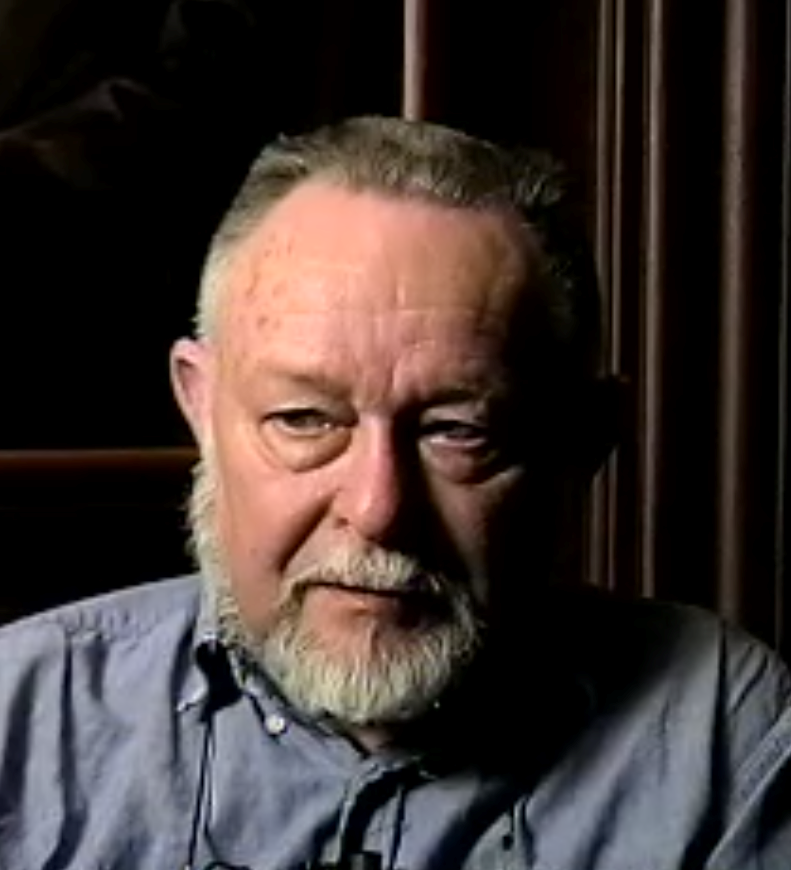
For most of every year, Bud Foote lived on the west end of Dauphin Island, Alabama, a few houses back from the Gulf of Mexico, enjoying the company of migratory birds and butterflies and resident mockingbirds, pigeons, pelicans, and cormorants. A bookish but sociable fellow, he enjoyed working his perceptions of these and other facets of island life into poetry of various sorts ranging from haiku to villanelles, from somber to ridiculous, from formal to rollicking. Those who enjoy the changing vistas and shifting populations (human and otherwise) of barrier islands will find much to relish and reflect on in the variety and surprise of these poems.
The Connecticut Yankee in the Twentieth Century: Travels to the Past in Science Fiction
While other writers have dealt with time travel as part of a general survey of science fiction, Foote's study is among the first to relate it to the body of Mark Twain's work and to attempt to account for the appeal of time travel to the past in historical, geographical, and psychological terms. Because it straddles several disciplines, it will appeal to those interested in science fiction, American literature, and popular culture.
 ROBERT FOULKE 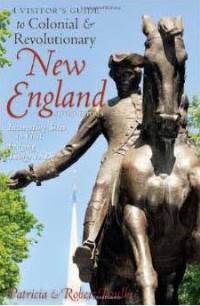 Paperback – June 4, 2012 A totally updated and revised second edition of their historically insightful survey of Revolutionary New England. In a totally updated and revised second edition of their historically insightful survey of Revolutionary New England, Patricia and Robert Foulke have scrupulously retraced their tracks to offer even more anecdotes, legends, and quotes on the countless battlefields and reenactments, historic homes and buildings, and living-history museums that help give this region its almost mythic appeal. Also brought up to date are recommendations for places to stay and eat and a calendar of events, from the reenactment of the Battle of the Old North Bridge in Concord, MA, to a Thanksgiving feast at Plimouth Plantation. There’s early American history in New England at virtually every turn, and the Foulkes are your guides to it all.  BILL MacILVAINE and son Rod have authored Successful Bareboat Chartering - The Essential Handbook for Captain and Crew Bareboat chartering is fast becoming the preferred choice among experienced yachtsmen. With bareboat chartering you get all the thrills of blue water sailing without the anxieties and extra work of boat ownership. With bareboat chartering, you plan the trip and you sail the boat. Your chartering organization shoulders the details.
 THOMAS C. SCHMIDT - Autobiography THOMAS C. SCHMIDT - Autobiography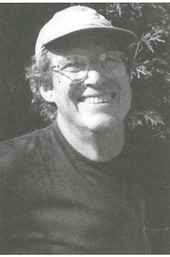 Seeking Adventure, Finding Home: A Memoir What is "Home”? Where is it? Who lives there? These are just three of the many questions of Being Human that Tom Schmidt sought to answer in this deeply felt memoir of journeys taken and discoveries made over a long and bountiful life. An ever-probing mind propelled Tom to significant accomplishments in twenty-two countries on five continents via four distinctly different careers: Episcopal priest to expatriate communities in Columbia, and facilitating racially integrated leadership workshops during apartheid in South Africa; an inter-organizational systems Ph.D. and state Commissioner of Education; a World Bank developer of educational programs in several third world countries; and, as a vigorous elder, an organic gardener and home renovation carpenter. But it was Tom’s ever-questing heart that impelled him finally to a perspective of his life as an abiding search for Home—within himself. That search led him far from his origins, drove him to seek new experiences and challenges, and delivered him in old age to the rigorously honest self-assessment of this plain-spoken memoir. In these pages, you will encounter a man who believes in making one’s life count, who is committed to a humble knowing of self, and who loves the world. Join him here as he opens to the grace of finding Home.
JOHN L. SPRAGUE - Biography 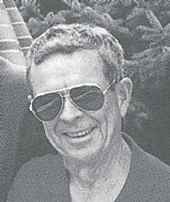 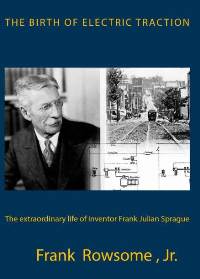 The Birth of Electric Traction: the extraordinary life and times of inventor Frank Julian Sprague The Birth of Electric Traction: the extraordinary life and times of inventor Frank Julian Sprague Frank J. Sprague was renowned in electrical circles around the world as "The Father of Electric Traction.” The control and safety systems which make railroads and mass transit work today are his. He was the first to design electric motors capable of earning their way in industry, and helped perfect the high-speed electric elevators that made skyscrapers possible. He created the basic circuitry that ran, and still runs, subways, elevators, and electrified railroads. Sprague was among the first men to bring rigorous mathematical discipline to replace cut-and-try research, making him the life-long rival of Thomas Edison. Sprague helped change electricity from a laboratory and lecture-platform oddity to a vital part of the modern world. Almost single-handedly he wired electricity into the second industrial revolution as a basic source of power and transportation.  children's books author. Sturges was trained at Princeton before working with the firm The Providence Partnership. Philemon had a strong appetite for books since he was a boy. He loved to read books and poetry aloud in his booming voice. The father of three grown daughters, Philemon enjoyed visiting schools and writing for a young audience. "Everything is new to kids," said Philemon. "it is an honor to introduce them to things -- plus, it's fun!" As a boy, Philemon spent many summers at his grandpa's house in Bristol, Rhode Island, where he fell in love with boats and the sea. After a four-year Navy stint in Japan, he moved back to Rhode Island. When he wasn't working on the development of downtown Providence, the waterfront of Newport, or the boat basin on Nantucket, he spent his time sailing, clamming, and riding the waves in his dory, the Dawn Treader. He even spent a year living on an old ferryboat moored in Providence Harbor. |
BirthdaysUpcoming EventsFeatures |

 JOE MASI
JOE MASI 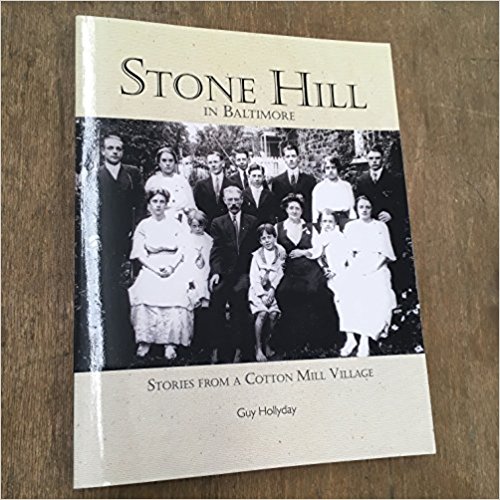
 through a series of changes that influenced the community, including the boom years of the World Wars, the privation of the Depression, and the closing of the mills in 1972. Trains chugged along Stony Run, and then they didn't. Open fields became houses. One by one small grocery stores opened, one by one they closed. The oldest interviewees remember a period of company-owned housing, no indoor plumbing, and ill-heated, crowded houses.
through a series of changes that influenced the community, including the boom years of the World Wars, the privation of the Depression, and the closing of the mills in 1972. Trains chugged along Stony Run, and then they didn't. Open fields became houses. One by one small grocery stores opened, one by one they closed. The oldest interviewees remember a period of company-owned housing, no indoor plumbing, and ill-heated, crowded houses.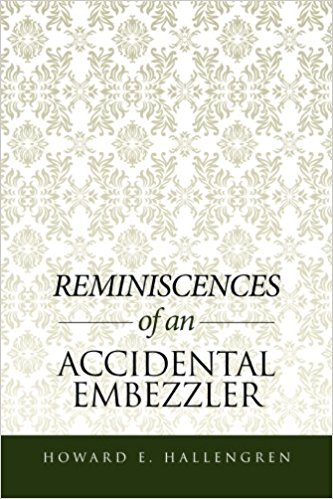 Reminiscences of an Accidental Embezzler
Reminiscences of an Accidental Embezzler Crisis in U. S. Health Care: Corporate Power vs. the Common Good
Crisis in U. S. Health Care: Corporate Power vs. the Common Good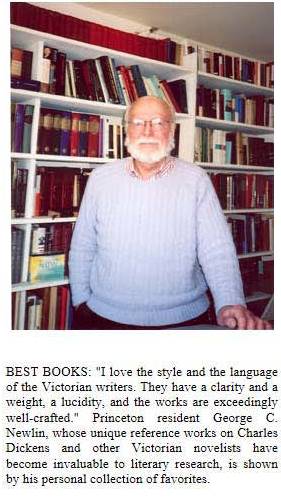 Jean Statton interviewed George Newlin for her March 29, 2006, column in the Princeton NJ Town Topics>
Jean Statton interviewed George Newlin for her March 29, 2006, column in the Princeton NJ Town Topics>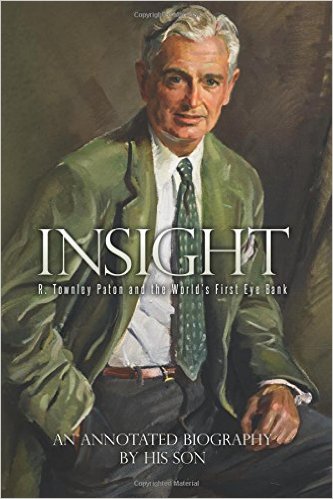

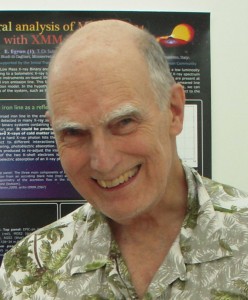
 Through his Father?s Letters, Bradt ?52 Reveals the Struggles of Wartime Families
Through his Father?s Letters, Bradt ?52 Reveals the Struggles of Wartime Families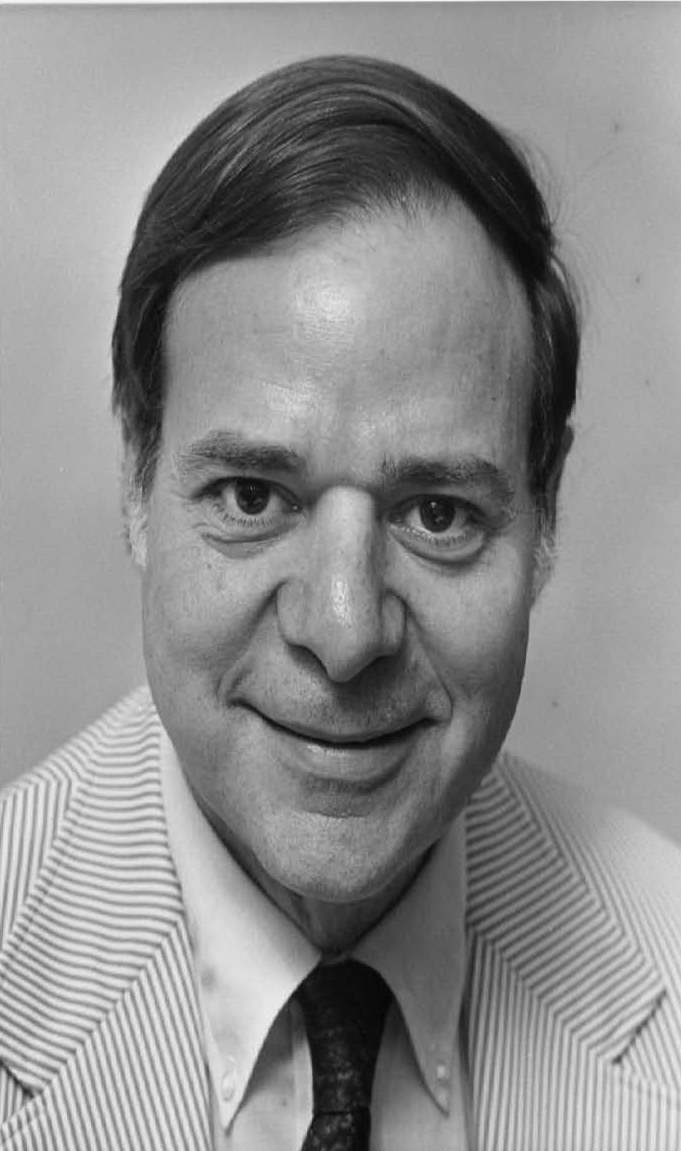
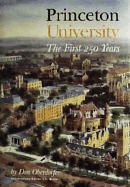
 How Obamacare is Unsustainable
How Obamacare is Unsustainable 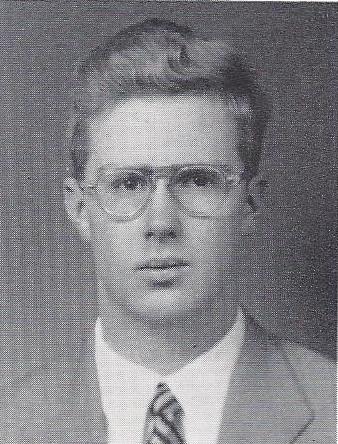
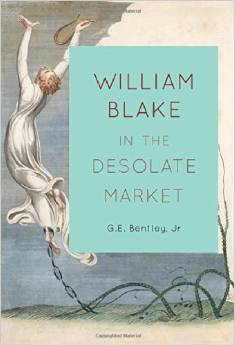 William Blake in the Desolate Market,
William Blake in the Desolate Market, 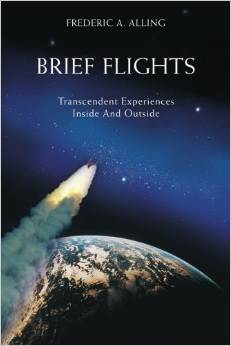
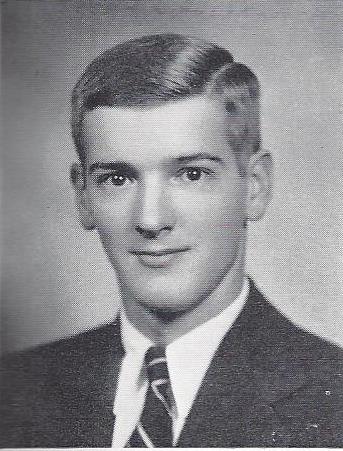
 Bill MacIlvaine (B.A. Princeton University) has held various leadership positions in industry on the east coast and in the Midwest, and ultimately assumed the presidency of a Wisconsin-based manufacturing firm. He completed his career in South Florida in banking, and in retirement served two terms as a city councilman of Naples, Florida. Bill and his wife Lucy were married in 1952 and have four children, ten grandchildren and six great-grandchildren. His avocation is ocean sailing and he has captained multiple charters in the Atlantic, Pacific and the Great Lakes. Read more at
Bill MacIlvaine (B.A. Princeton University) has held various leadership positions in industry on the east coast and in the Midwest, and ultimately assumed the presidency of a Wisconsin-based manufacturing firm. He completed his career in South Florida in banking, and in retirement served two terms as a city councilman of Naples, Florida. Bill and his wife Lucy were married in 1952 and have four children, ten grandchildren and six great-grandchildren. His avocation is ocean sailing and he has captained multiple charters in the Atlantic, Pacific and the Great Lakes. Read more at 